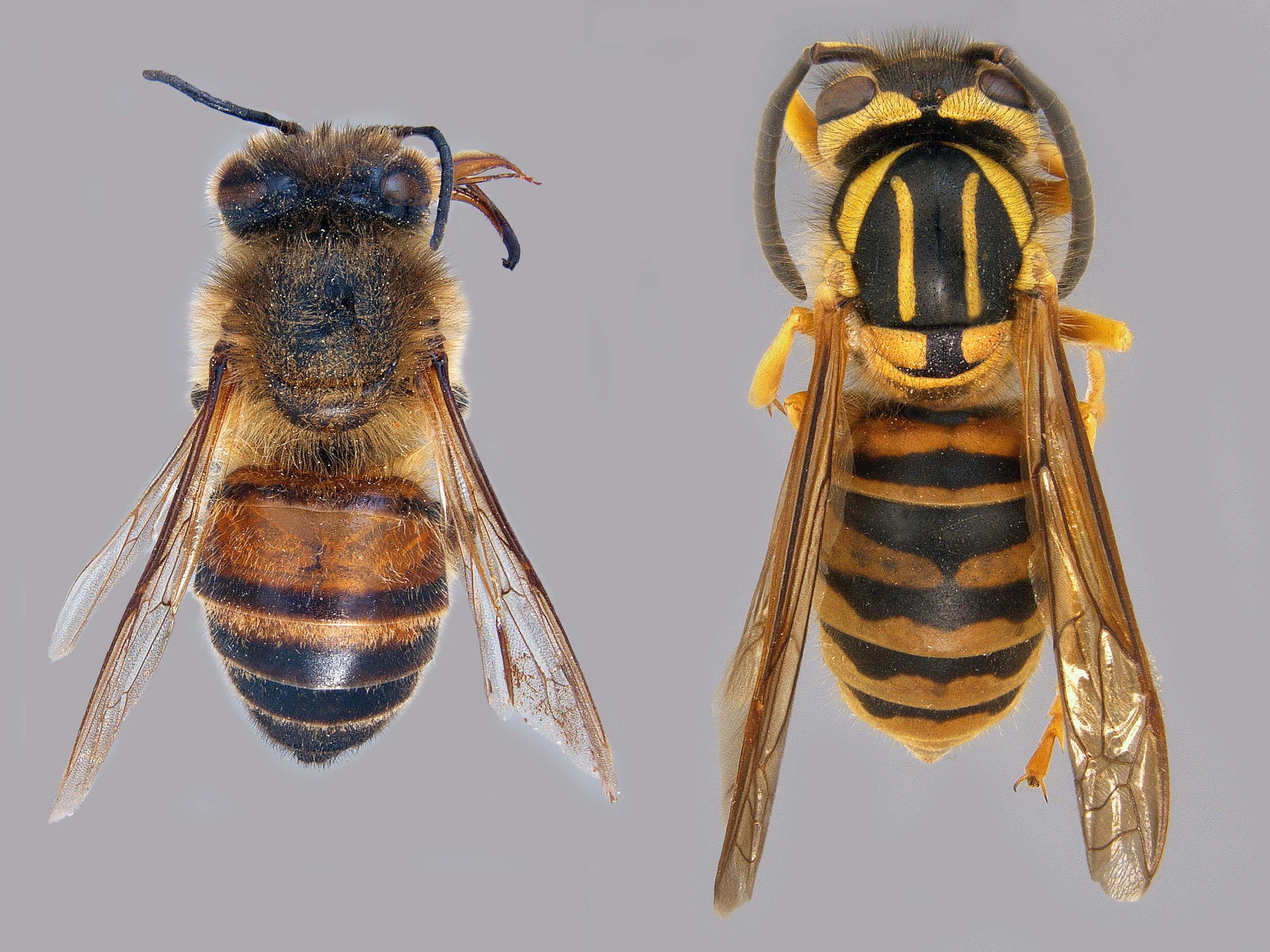

Image Source extension.msstate.edu
Introduction
Nature’s delightful beauties never cease to captivate our attention and awe. Among the buzzing insect world, two fascinating creatures, the Yellow Jacket and the Honey Bee, often confuse and bewilder us with their similar appearances. While both belong to the large order of Hymenoptera, they possess distinct characteristics and behaviors that set them apart. In this comprehensive guide, we will delve into the captivating world of these fascinating creatures, unraveling their unique traits, and understanding the key differences between them.
Before we embark on this enthralling journey of discovery, let’s take a moment to appreciate the mesmerizing beauty of these insects. The enchanting hues of yellow and black adorn their delicate bodies, making them both vibrant and striking. Their pivotal roles in the ecosystem as pollinators and scavengers further magnify their significance and highlight the need to differentiate between these two species accurately.
Throughout this article, we will explore their physical characteristics, nesting habits, dietary preferences, and behavior patterns, equipping you with the knowledge to identify these magnificent creatures and understand their invaluable contributions to our world.
Physical Characteristics
At a glance, it’s easy to confuse a Yellow Jacket for a Honey Bee due to their shared color palette. However, upon closer inspection, several distinct features set them apart. Yellow Jackets exhibit a more slender and streamlined appearance, sporting a vibrant yellow and black pattern on their body. Their hairless, sleek bodies enable them to navigate quickly, making them efficient flyers. In contrast, Honey Bees exhibit a plumper and fuzzier profile, with a more rounded abdomen and thorax. Their bodies are covered in tiny hairs, contributing to their overall fuzzy appearance.
While both species possess stingers, their design and purpose differ significantly. Yellow Jackets boast smooth stingers, enabling multiple stings during an attack. On the other hand, Honey Bees possess barbed stingers, which snag into the victim’s skin, pulling away from the bee’s body upon stinging. This unique feature often leads to the bee’s demise after a single sting.
Understanding these key physical characteristics will help you distinguish between these remarkable insects and appreciate their individuality within the buzzing world around us.
Behavior and Nesting Habits
To truly understand these creatures, it’s essential to observe their behavior and nesting habits. Yellow Jackets, renowned for their aggressive nature, are territorial and defensive insects. They build their nests in various locations such as abandoned rodent burrows, trees, or even within man-made structures. These nests typically consist of a paper-like material made from chewed wood fibers mixed with saliva and house thousands of individuals.
Contrastingly, Honey Bees have a more communal and cooperative nature. They build intricate nests known as beehives, often found in tree hollows, crevices, or artificial structures such as beehives provided by beekeepers. These hives are a masterpiece of architectural brilliance, comprising hexagonal cells made from beeswax. A single hive can house tens of thousands of bees, working together harmoniously to maintain their colony and raise their young.
The behavioral diversity displayed by these insects offers a fascinating glimpse into their lives, emphasizing their distinct characteristics and contributions to the ecosystem.
Eating Habits and Pollination
While the Yellow Jacket is a well-known scavenger, its dietary preferences extend beyond scavenging for food. These opportunistic feeders actively seek out sweets, proteins, and carbohydrates. You may have encountered their persistent presence during outdoor picnics as they hover around sugary snacks or meat products.
On the other hand, Honey Bees primarily survive on nectar and pollen. They play a vital role in pollination, inadvertently transferring pollen grains from the male parts of flowers to the female parts, enabling fertilization and the production of seeds and fruits. The intricate process of pollination is crucial for sustaining plant biodiversity and ensuring the availability of various food sources for both humans and countless other species.
Understanding the dietary preferences and pollinating capabilities of these species enhances our appreciation for their integral role in maintaining a balanced ecosystem.
Conclusion
In conclusion, delving into the captivating world of the Yellow Jacket and the Honey Bee reveals intricate details that set these magnificent creatures apart. By understanding their physical characteristics, behavior patterns, nesting habits, and dietary preferences, we can truly appreciate their distinctive qualities and invaluable contributions to nature’s tapestry.
As these buzzing insects continue to thrive and play their crucial roles within the intricate web of life, let us be mindful of their significance and embrace the beauty they bring to our surroundings.
Next time you spot a yellow and black insect flitting across the flowers, take a moment to observe and appreciate their unique traits, knowing that it could be a Yellow Jacket or a Honey Bee, each playing its essential part in nature’s grand symphony.